What Is A Change Management Plan?
In a Software Advice survey* from 2022, 71% of employees said they were overwhelmed by the amount of change at work.
While it would be easy to write this off as a side effect of COVID-19, the truth is that constant change isn’t just a pandemic trend:
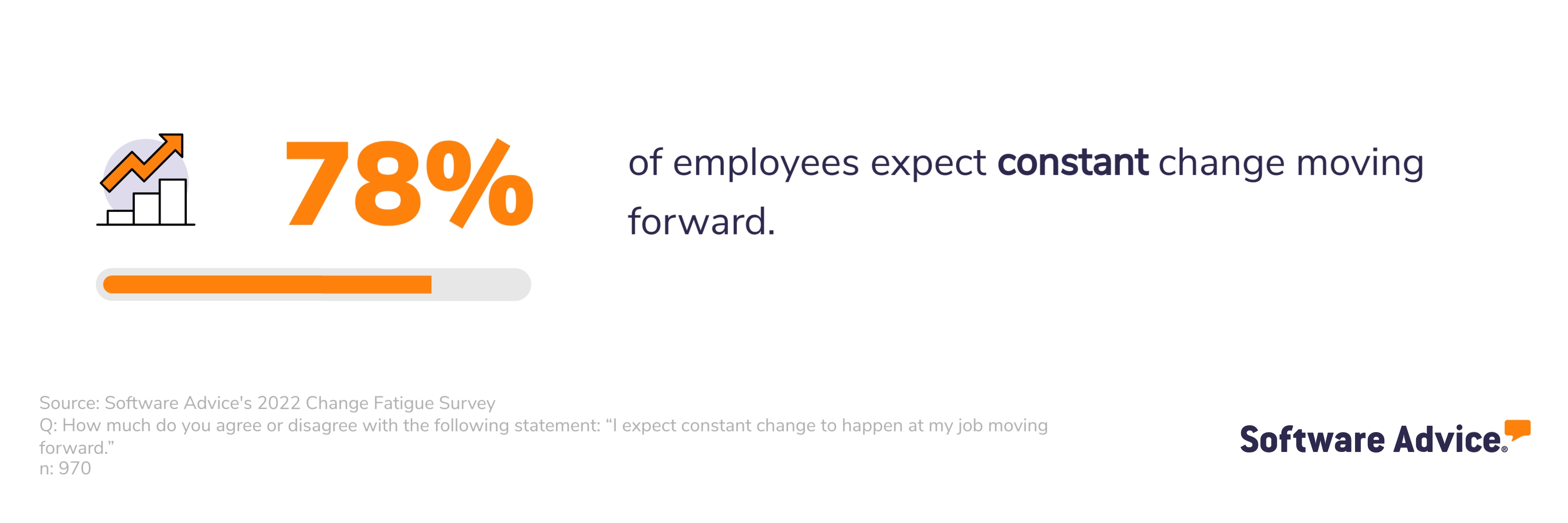
As a business leader, it’s your responsibility to keep employee morale and performance high during times of change—but without a formal strategy in place that can feel like trying to swim upstream.
If you’re looking for information that will help you level up your current change management approach, this guide is for you. Backed by data and insights from Gartner [1, 5], this content will explain what a change management plan is, why it’s essential in today’s work environment, and the resources you need to create one.
What is a change management plan?
A change management plan is a structured outline an organization develops in order to successfully introduce and manage change within their company.
There are many situations where a change management plan is necessary. For example, an organization undergoing a digital transformation or a merger with another business would elicit a change management plan.
We asked survey participants what kind of changes have taken place at their job since the start of COVID-19, and these were the most common answers*:
New health and safety policies (47%)
New/different job responsibilities (42%)
Change in where work is done (40%)
Change in when work is done (34%)
New technology/software (34%)
Change management plans may be developed for the organization at large in the case of a widespread transformation (such as introducing new health and safety policies during a nationwide health crisis), but they can also be helpful for individual departments or teams facing a change.
What are the components of a change management plan?
What a change management plan entails will vary depending on the business and the scope of the transformation it’s facing. For example, some sources [3] believe that every change management plan should have the following six components:
Leadership alignment
Stakeholder engagement
Communication plan
Change impact and readiness
Training
Organization design
Other consulting agencies believe that change management plans should have three, five, or even 10 components [4].
We asked Shailee Williams, a technology manager at Ridge Administrative Services [2] who’s overseen many digital transformations, whether she uses a structured approach when overseeing change initiatives. Here’s what she had to say:
“I’ve seen all of the slides. I’ve seen the layout and the textbook images that say ‘...here are the four elements for effective plans.’ But in practice, are you really going to say ‘Hey guys, we need to first define then analyze the situation at hand?’”
To Williams’ point, you don’t need to follow a rigid, step-by-step approach to successfully navigate times of change. In truth, the exact number of steps or components in an effective change management plan doesn’t matter—instead, the key to successful change is to focus on ensuring that your plan considers the following:
The intended results of the change
The why behind the change
Who will sponsor the change (i.e., which executives will champion the change)
Who will be impacted by the change
How the change will be communicated to the organization
What steps need to be taken to enact the change
Why are change management plans important?
HR leaders agree that effectively managing change is an increasingly important component of their department’s function [5]:
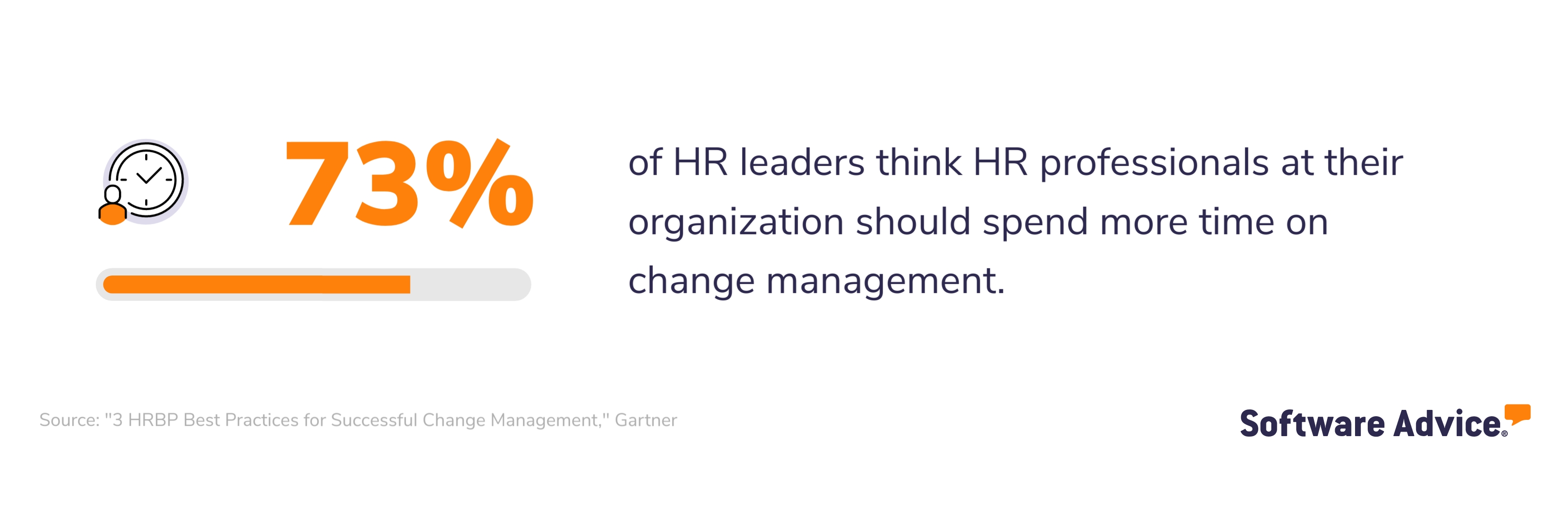
This is partially because the amount of change the average employee can absorb without becoming fatigued has fallen by 50% since the start of the pandemic, and change fatigue comes with a variety of negative consequences that are worth avoiding:
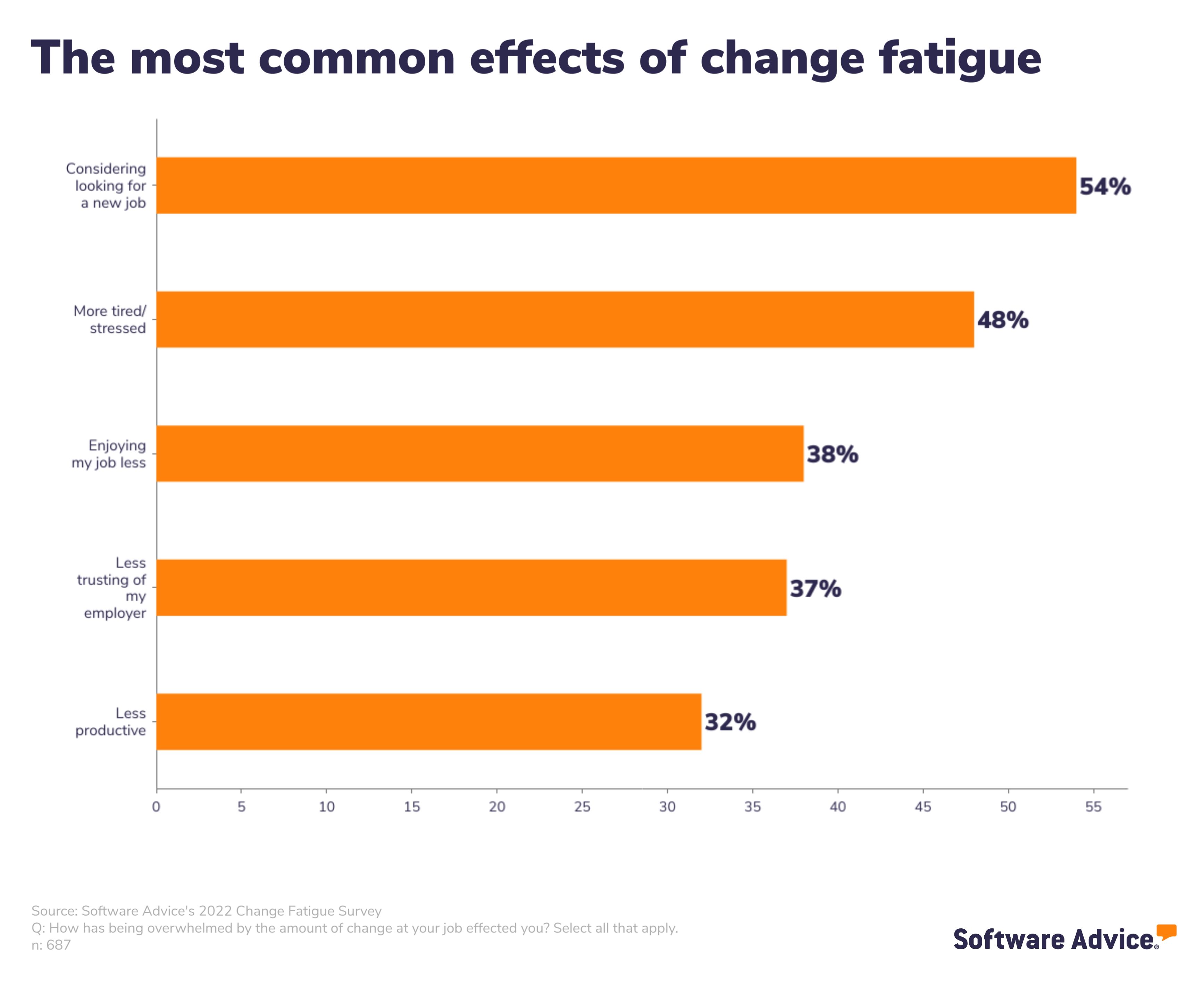
Further, the majority (67%) of employees do not understand their role when a change initiative is launched [1]. Having a change management plan in place will increase your organization’s chance of a successful transformation by clearly defining the “why, what, who, and how” behind the change.
What is the best change management strategy for today’s work environment?
Organizations that adopt an open-source approach to change management increase their probability of carrying out a successful change initiative by 24%. Open-source change management is a tactic where employees are actively engaged in change initiatives. With this strategy, employees take part in implementation planning for the change and organizational communications prioritize transparency, accountability, and feedback.
This is different from a top-down change management plan where decisions are made at the leadership level and disseminated to the rest of the workforce. Only a little over a third (34%) of top-down change initiatives meet their defined goals [1].
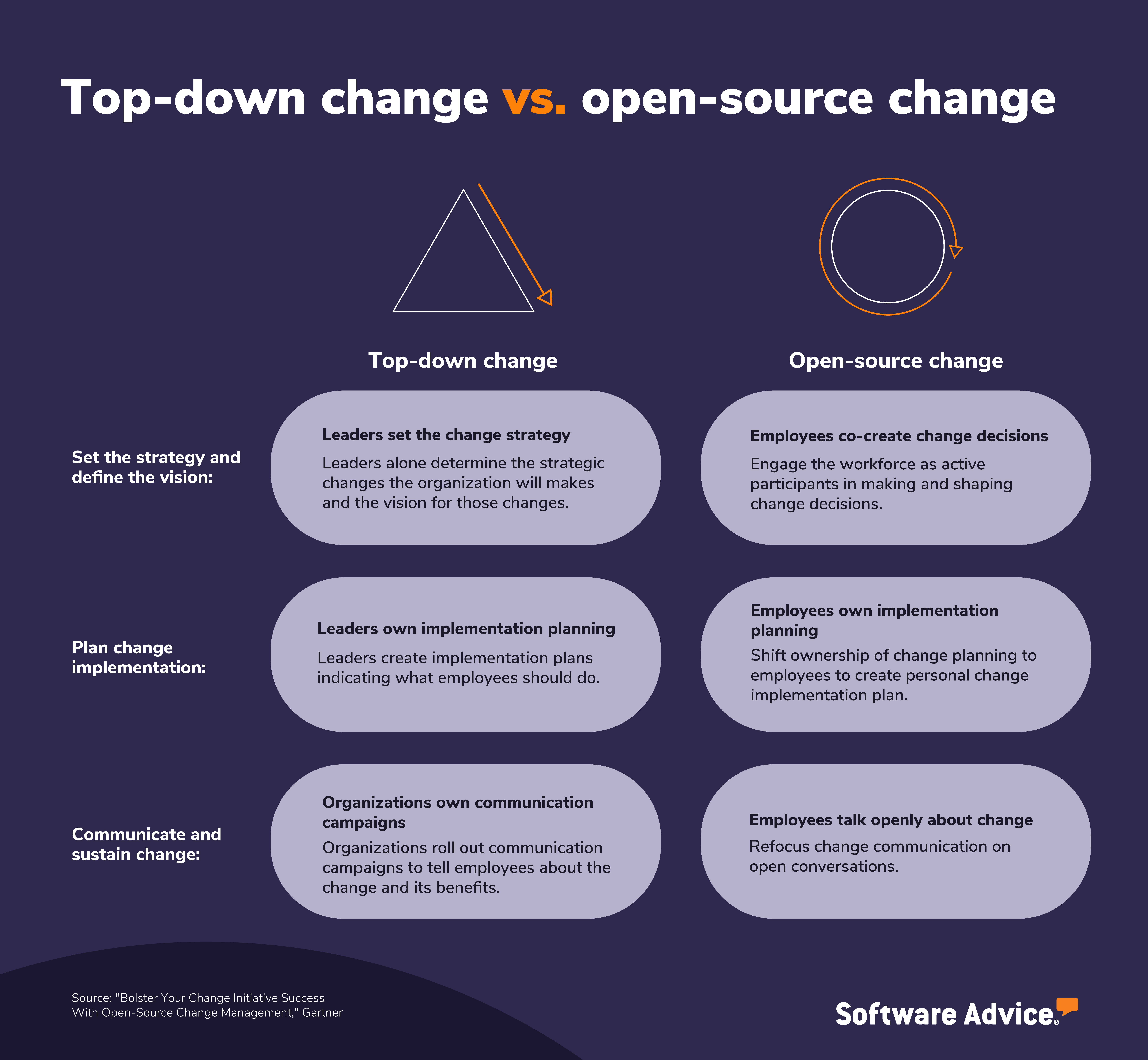
Williams is a huge proponent of the bottom-up change management approach. Just a few minutes into our conversation, she said:
“If you want it to work, it has to be something that is wanted, and the most-appreciated changes and the ones that are implemented are bottom up.”
3 resources needed to support an open-source change management plan
1. Collaborative platforms
In order to involve employees in the change management process, your organization needs tools in place that can support conversations between teams, manage the change process, and capture information about employee adoption and engagement levels.
Survey tools, project management platforms, and collaboration software are all great for this, with the first type of tool being particularly useful for polling team members about how they feel about the proposed change.
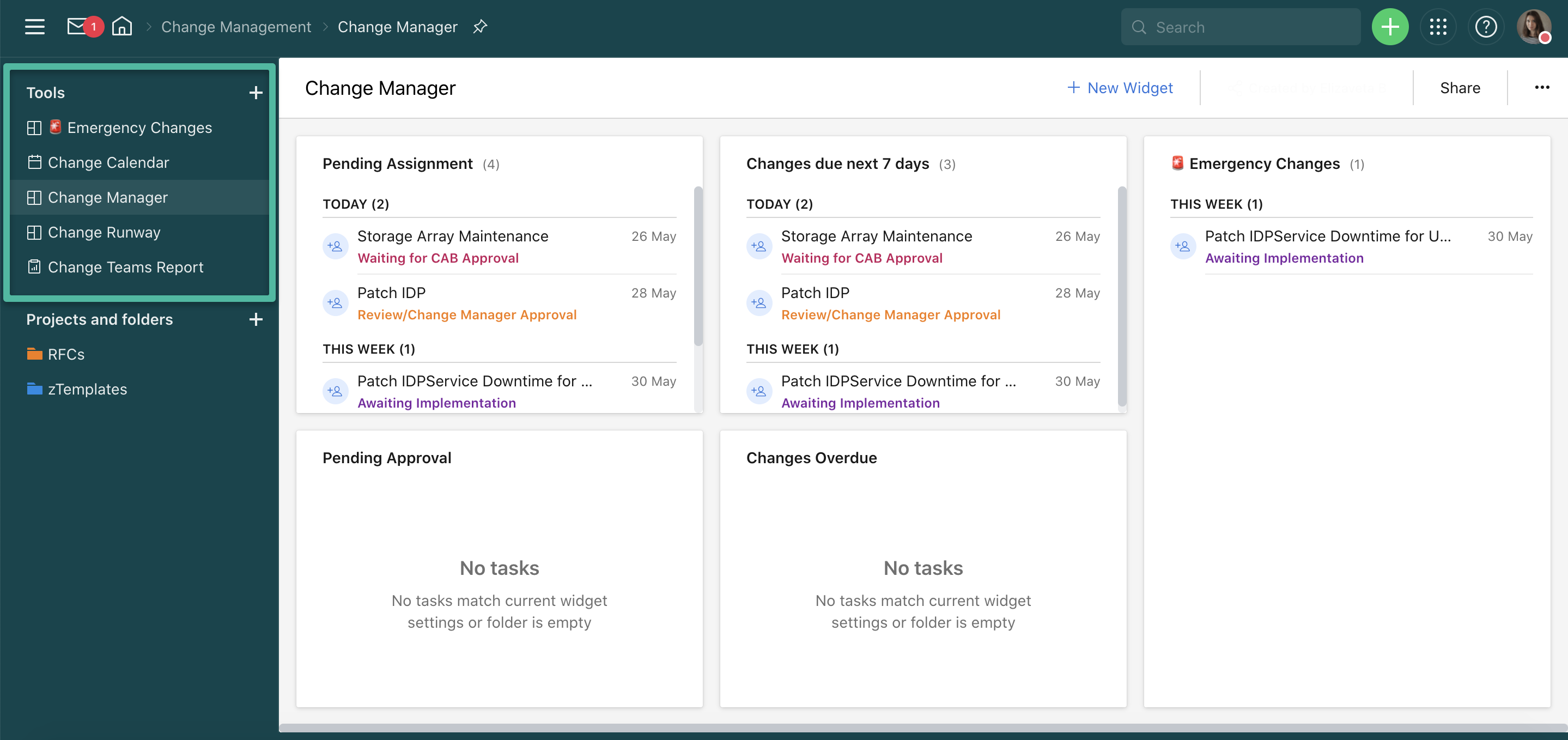
A dashboard organizes tasks related to ongoing and upcoming changes in Wrike [6]
2. Communication channels
Enabling frequent, peer-driven, two-way communication is a must for open-source change management. From an employee’s perspective, top-down communication may give the sense that a change is being imposed upon them. However, a communication strategy focused on talking, not telling, increases change success by up to 32% and can drive employees’ well-being and sense of psychological safety up to 33% and 46%, respectively [5].
Instead of delivering information and instructions related to a change via an email, set up a channel where impacted employees can openly discuss the specifics of a change with one another and ask questions. Employee communications software can help with this, and our directory includes options for businesses of all sizes.

Create a channel where those involved and impacted by change initiatives can communicate via a platform such as Slack (Source)
3. Training
Lastly, training is essential to ensure change success. While training doesn’t need to be delivered through a formal course, some initial instruction should be provided so that employees understand how they can support the organizational transformation.
For instance, you can deliver training virtually with the help of an e-learning solution, or you can plan to host in-person sessions ahead of the transformation. In some cases, shadowing (a practice where an employee or team watches a more experienced professional work through a process) may be the best form of training.

A screenshot shows a training plan and Q&A session hosted in 360Learning (Source)
Resilience training may also be worth delivering if you’re facing a widespread, organizational change. This kind of training provides employees with strategies they can use to better navigate difficult situations at work. Learn more: A Guide to Fostering Resilience in the Workplace.
Get the resources you need to stay organized during times of change
Of those workers suffering from change fatigue, 83% say their employer has not provided enough tools or resources to help them adapt*. Developing a change management plan that incorporates an open source approach is the best solution, and when you put the jargon aside, what that really means is implementing changes bottom-up. To quote Williams:
“Don’t ever advocate for change on behalf of someone else who is going to be affected by it unless you’re willing to walk a mile in their shoes and then walk that same mile with them everyday until you’re tired right alongside them.”
Ready to bolster your change management plan? Evaluate your need to invest in the resources outlined in the section above. Chat with one of our software advisors if you need help creating a shortlist of potential solutions—it’s free and fast. And in the meantime, be on the lookout for more content on the topic of change management coming soon.
Sources
Succeeding at Change Management With an Open-Source Approach, Gartner
Shailee Williams, Technology Manager at Ridge Administrative Services, LinkedIn
6 components of Change Management to set you up for success, r10
10 Components of an Effective Change Management Strategy, 3Pillar Global
3 HRBP Best Practices for Successful Change Management, Gartner
Survey methodology
*Software Advice’s 2022 Change Fatigue Survey was conducted in March 2022 among 970 U.S. employees representative of the U.S. workforce by age, race, and gender. Respondents had to be with the same employer since the start of the COVID-19 pandemic. The goal of this survey was to learn how employees have responded to changes at their job over the course of the pandemic.
Note: The applications selected in this article are examples to show a feature in context and are not intended as endorsements or recommendations. They have been obtained from sources believed to be reliable at the time of publication.